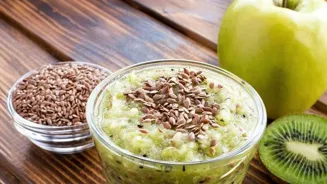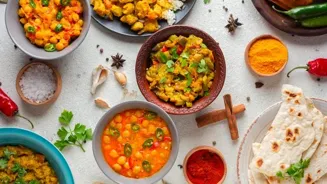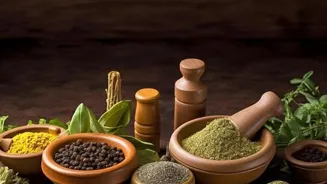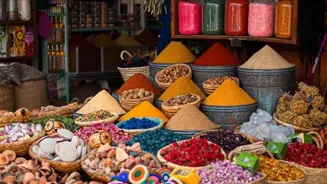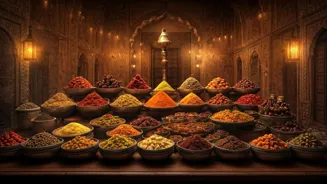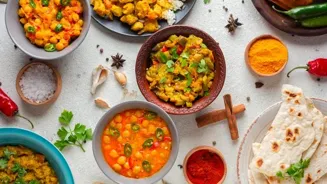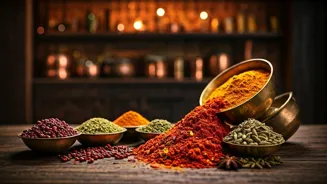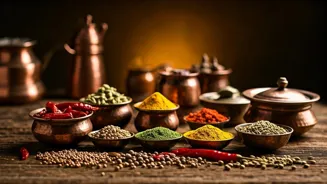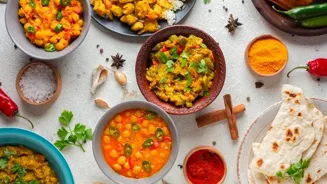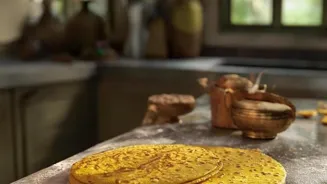Unlock the Secrets of Indian Breakfast: Step-by-Step Guide to Culinary Delight! Dive deeper for flavorful insights
For many Indians, breakfast isn't just a meal; it's a ritual, a symphony of flavors, and
a vibrant start to the day. From the fluffy idlis of the South to the savory parathas of the North, Indian breakfast offers a dizzying array of options.
But amidst this delicious diversity, how does one craft the perfect Indian breakfast? Worry not, we've got you covered with a step-by-step guide that will transform your mornings into a culinary celebration.
Indian cuisine varies regionally; know breakfast staples for authentic cooking
The beauty of Indian cuisine lies in its regional variations. What constitutes a typical breakfast in Rajasthan will differ vastly from what’s served in West Bengal. Understanding these nuances is key. South Indian breakfasts often revolve around rice and lentils, think idli, dosa, and vada.
These are commonly served with sambar and chutney. In the North, wheat reigns supreme, leading to hearty parathas, stuffed with potatoes (aloo paratha), cauliflower (gobi paratha), or radishes (mooli paratha). Western India boasts dishes like poha (flattened rice) and upma (semolina).
Eastern India has options like luchi (fried flatbread) and aloo chokha (mashed potatoes). So first and foremost, familiarize yourself with the breakfast staples of your region or the region you wish to explore. This knowledge will guide your ingredient selection and cooking techniques.
After all, you cannot make good food, if you do not know the ingredients.
Indian dish essentials: fresh produce, spices, pantry staples
The ingredients are the soul of any Indian dish. Fresh produce is preferred, but good-quality packaged items can also do the trick when time is short. Key ingredients to keep in your pantry include rice, lentils, semolina (rava), flattened rice (poha), wheat flour (atta), and a variety of spices.
Spices are like the makeup that brings beauty to the eyes. Don't shy away from using a generous amount of spices. Essential spices include turmeric powder, cumin powder, coriander powder, red chili powder, mustard seeds, and asafoetida (hing).
Stock up on fresh vegetables like onions, tomatoes, potatoes, ginger, and green chilies. These will form the base for many breakfast curries and accompaniments. Also, remember the importance of ghee (clarified butter) or oil for cooking.
Choose one that suits your taste – groundnut oil, sunflower oil, or even coconut oil can work wonders. And while you might not need everything at once, having these basics on hand will empower you to create a variety of delicious and authentic Indian breakfasts.
Knowing regional differences enhances cooking flavors and traditions, making dishes great
Ultimately, knowing your region is crucial. This will help with the flavors required of the dish. Be certain about the dish you are deciding to cook and learn more about the ingredients.
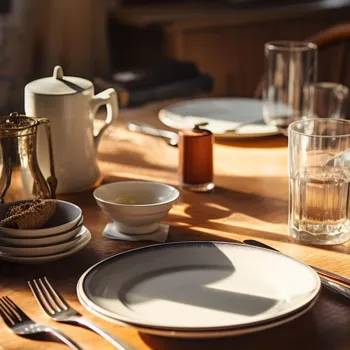
Ingredients are not the only difference between regions, but the methods they use to cook, the time they take to cook and the equipment that they use to cook are varied.
Different regions have different cooking traditions, so even though you know the dish, you might want to pick up on some cooking traditions. This will help add to the taste of your dish and make your food great!
Balance nutrients in Indian breakfast for energy: carbs, protein, fats
A perfect Indian breakfast isn't just about taste; it's about balance and nutrition. Aim for a combination of carbohydrates, protein, and healthy fats to keep you energized throughout the morning.
For example, if you're opting for idli and dosa (carbohydrates), pair it with sambar and chutney (protein and healthy fats). If you're making parathas (carbohydrates and healthy fats), serve it with yogurt (protein) or a simple vegetable curry.
Rotate breakfasts for variety and nutrients
Variety is the spice of life, and the same holds true for breakfast. Avoid eating the same dish every day; it can lead to monotony and nutritional imbalances. Try to rotate your breakfasts throughout the week.
For example, you could have poha on Monday, upma on Tuesday, paratha on Wednesday, idli on Thursday, and so on. This will ensure that you get a wide range of nutrients and keep your taste buds satisfied.
Plan quick or elaborate breakfasts based on time, try new recipes for variety
Furthermore, consider the time you have available. Some breakfasts, like poha or upma, are quick and easy to prepare, while others, like dosa or paratha, require more time and effort. Schedule your breakfasts accordingly.

Save the more elaborate dishes for weekends or days when you have more time to spare. And don't be afraid to experiment! Try new recipes and combinations to discover your personal favorites.
A little planning and variety can transform your breakfast routine from a chore into a delicious and nutritious start to the day and it has never been easier with the internet.
Easy Indian breakfast dishes: master idli, dosa, parathas; learn tadka
While Indian cuisine may seem intimidating at first, many breakfast dishes are surprisingly easy to master. Start with the basics. Learn how to make a simple idli and dosa batter. Practice making different types of parathas.
Get comfortable with tempering spices (tadka) – the process of heating oil or ghee and adding spices to release their aroma and flavor.
Online tutorials and cookbooks help improve cooking skills
Online tutorials and cookbooks are your best friends. There are countless resources available that can guide you through each step of the cooking process. Don't be afraid to make mistakes. Cooking is a learning curve, and the more you practice, the better you'll become.
Start with simple recipes and gradually move on to more complex ones as you gain confidence. And remember, even if your first attempt isn't perfect, it will still be delicious!
learning basics of spices & veggie prep key to Indian cuisine greatness
Also, focus on the basics like cutting vegetables and knowing spices. You can learn about the spices by knowing where the spices are from. Some spices are of better quality than others. Learning how to buy the right spices, cutting vegetables or even prepping will come in handy.
The more you know your way around the kitchen, the easier it is to create magic. Therefore, learning the basics is essential and the key to unlocking the greatness of Indian cuisine.
Tempering spices elevates Indian dishes with flavor
Tempering, or tadka, is the heart and soul of many Indian dishes. It involves heating oil or ghee in a small pan and adding spices like mustard seeds, cumin seeds, and asafoetida. As the spices sizzle and release their aroma, the mixture is then poured over the dish, infusing it with flavor.
Tadka mastery for authentic Indian breakfasts: heat oil right, add spices in order, pour hot
Mastering the art of tadka is crucial for creating authentic Indian breakfasts. The key is to heat the oil or ghee to the right temperature. It should be hot enough to sizzle the spices but not so hot that it burns them. The order in which you add the spices also matters.
Mustard seeds are usually added first, followed by cumin seeds and then other spices like asafoetida and dried red chilies. The tadka should be poured over the dish immediately after it's prepared, while the spices are still sizzling and fragrant.
Experiment with tadka variations for elevated dishes
Different regions use different variations of tadka. Some add curry leaves, others add ginger and garlic. Experiment with different combinations to find your favorite. And remember, a well-prepared tadka can elevate even the simplest dish to new heights.
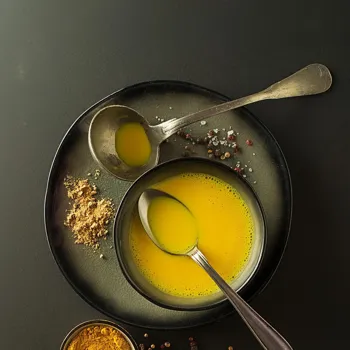
The tempering must be done right, if there is less oil you must add oil. Also, be weary, or you might burn the spices, and there is no going back from there. The spices must cook slowly, to allow for the aroma to be released.
Indian breakfasts rely on flavorful accompaniments for depth
No Indian breakfast is complete without the right accompaniments. Whether it's a tangy chutney, a cooling raita, or a spicy pickle, accompaniments add another layer of flavor and texture to the meal. South Indian breakfasts are typically served with sambar and coconut chutney.
North Indian breakfasts are often paired with yogurt or a simple vegetable curry.
Diverse condiments enhance meal flavors
Chutneys can be made from a variety of ingredients, including coconut, mint, coriander, and tomatoes. Raita is a yogurt-based dip that can be flavored with cucumbers, onions, or spices. Pickles add a spicy and tangy kick to the meal.
The choice of accompaniments depends on the main dish and your personal preferences.
Plan breakfast accompaniments ahead for a better morning meal
Prepare your accompaniments in advance to save time in the morning. You can make chutneys and pickles ahead of time and store them in the refrigerator. Raita is best prepared fresh, but you can chop the vegetables in advance.
A little planning can make a big difference in the overall breakfast experience. Remember, that the right accompaniment can make or break your dish.
Presentation is key for an appealing breakfast
Finally, don't forget about presentation. A well-presented meal is more appealing and enjoyable. Serve your breakfast in attractive dishes. Garnish it with fresh herbs like coriander or mint. Add a dollop of yogurt or a sprinkle of spices.
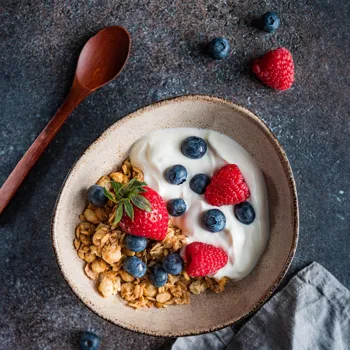
Savor breakfast, connect with loved ones, nourish body and soul
Take the time to sit down and savor your breakfast. Don't rush through it. Appreciate the flavors and textures. Share it with your family and friends. Breakfast is a time to connect and enjoy each other's company. Remember, the goal is not just to nourish your body but also to nourish your soul.
Guide to creating perfect Indian breakfast for culinary adventure
So, there you have it – a step-by-step guide to creating the perfect Indian breakfast. With a little planning, practice, and creativity, you can transform your mornings into a culinary adventure. Happy cooking!
